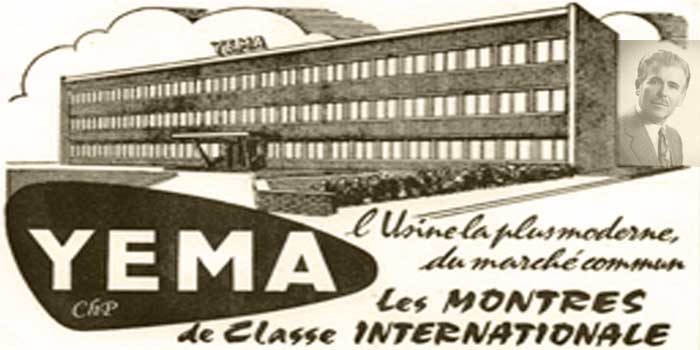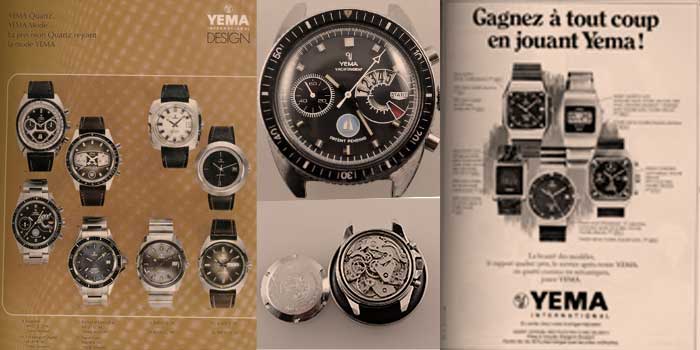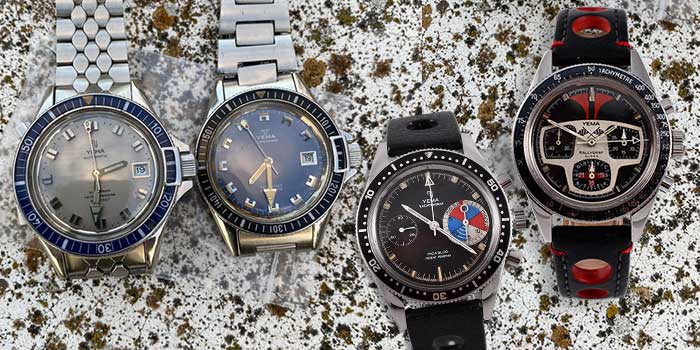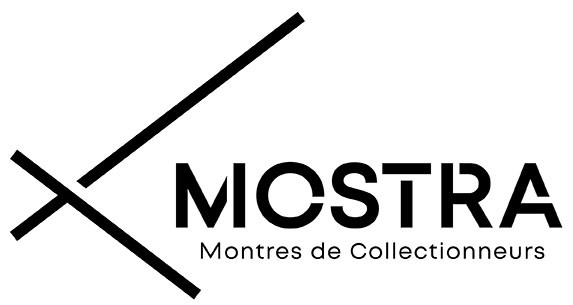
Yema, the French watch brand that marked the seventies with the superman.
There exists in the collective unconscious of watch collectors a brand with which professional watches are associated. Today it is Rolex and its submariners or explorer and other gmt-masters that hold the upper hand, but in the eighties Yema, the French brand, conquered one after the other bastions and lands privileged games of transalpine brands after the watch crisis had burned their wings.
The history of a brand is often the concrete projection of the history of a founder, for Yema it will be Henri Blum: a son and grandson of watchmakers, and a man resolutely anchored in the technique of his century and in its practical application. Henri graduated from the watchmaking school in 1931, top of his class with a silver medal, after two years in the family business, he went, during his military service, to serve in the army in elite units. : tanks, he will come out sergeant and will understand the importance of the arrangement of mechanical elements in a confined space, he will also understand the importance of the longevity of wear parts in the operational functioning of 'a system.
On the strength of his experience and his observations, he wishes to take on responsibilities in a large company. He will join the Lip factories in 1935 where he will learn to master the mysteries of watchmaking production, its tricks, its schedules, its supply mechanisms, and its logistics. In 1943 he became production manager and also headed the technical department. He was appointed director of the two entities in 1944 for manufacturing and 1946 for the technical department, now having perfect control of the operation of a watchmaking factory and its ecosystem.
He is also a fervent follower of French manufacturing… who knows perfectly all the bar turning, watchmaking supplies and blanks companies in the Jura. A wonderful experience that will allow him in 1948 to create Yema, at 3 rue Paul Bert in Besançon in the Doubs. A workshop that will quickly take on the size of an assembly plant in the 1950s.
It is in this direction that the company will move and know its first successes, Establishment, proto-industrial manufacturing technique which consists in manufacturing a watch from components coming from several subcontractors while bringing together all the parts at the last moment in order to finalize the watch. An industrial strategy that will enable Yema to produce watches of remarkable quality that are highly appreciated by watchmakers and jewelers.

In 1961, Yema will produce more than three hundred thousand watches per year and will build new premises in order to set up an assembly plant which will allow it to produce a very large collection of models. This factory of more than 2400 square meters called Usine Yema International will be inaugurated in September 1961, clearly displaying its ambitions. On the first floor an assembly line capable of producing six hundred watches per day with a breakdown of tasks that will allow the company to offer a range of more than 100 models and above all to start producing technical and professional watches. The first will be underwater.
With the yema superman model, the company will now become a legend and delight professionals. The French Air Force will order the superman model to equip its crews, the French sailing federation will designate the Yatchingraf regatta chronograph as the official watch of the French team and will be worn by renowned sailors such as Eric Tabarly or Florence Arthaud. With models whose design is at the top of the trend, the brand enters the automotive world with the rallygraf chronograph and Mario Andretti, the aviation world will not be forgotten with the Flygraf. The astronaut Jean Loup Chretien, the first French astronaut, will be equipped with a Yema Spationaute model during his first flight in space, in tandem with the Sturmanskie chronographs of his Russian teammates. Sales exceeded 500,000 watches in 1970 and reached one million pieces produced in 1977 and doubled in 1982, the year of the departure of the founder, renamed Henry-Louis Belmont after the war.
In 2008, Henry-John Belmont, the son of the founder "having other ambitions than that of taking over the family business" decided to sell Yema to the Matra group, probably under the influence of the Minister of Research and Technology of the time (also regional councilor for Franche-Comté) in order to create and manage the new entity called "Matra Horlogerie". He will be ousted and pushed out in 1986 after merging the Jaz company (watches and alarm clocks) and the Jaeger car dashboard


